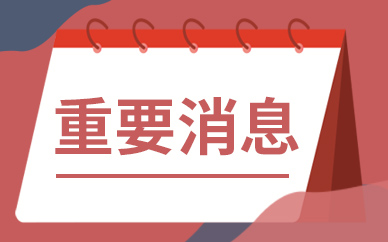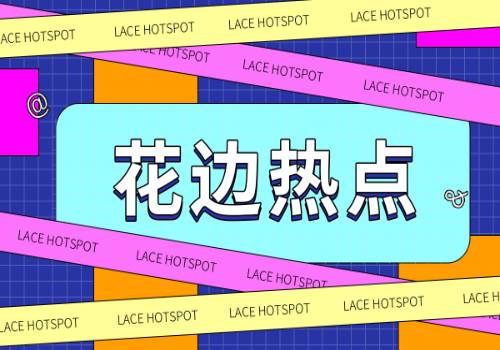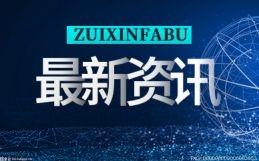
ImageSource:VisualChinaChatGPT "sdominanceintheAImark
钛媒体APP 2023-05-06 22:54:40
Image Source: Visual China
 (资料图片仅供参考)
(资料图片仅供参考)
ChatGPT"s dominance in the AI market has spurred global competition, with companies like Google and Microsoft launching rival products. Google has recently announced its Security AI Workbench at the RSA 2023 conference, while forming a new "Google DeepMind" department in response to the popularity of ChatGPT. In China, tech giants are vying to become "China"s OpenAI," with numerous language models being developed by industry leaders.
Since early March, major Chinese tech companies have entered the battlefield with several former AI industry leaders returning to the forefront of entrepreneurship and innovation. Major model products such as Alibaba"s Tongyi Qianwen, Baidu"s Wenxin Yuyan, SenseTime"s SenseNova, Huawei"s Pan Gu, Kun Lun"s Tian Gong and JD.com"s Yan Xi have been launched. Industry heavyweights such as Lee Kai-fu, former Baidu president Lu Qi, Meituan co-founder Wang Huiwen, Sogou founder Wang Xiaochuan, and former Google scientist Li Zhifei have joined the race of large language models.
Anxiety over the GPT race has reached a boiling point, prompting many to take action against it. Since late November last year, over 20 large language model products have been released by global enterprises and research institutions.
Industry insiders told TMTPost that ChatGPT-like models in China are roughly equivalent to GPT-3 and below in terms of technical capabilities. The primary reasons for the gap between Chinese models and the latest GPT-4 include weaker technology, insufficient computing power, product experience and weaker engineering capabilities.
China’s AI companies are scrambling for the title of "China"s OpenAI." They are in an awkward situation, however.Following the same route of OpenAI may not necessarily result in a product that can compete with those of tech giants, but not following suit risks being eliminated by newcomers. As a result, these companies are creating similar products. It seems that “everyone in China is making their ChatGPT.”
Meanwhile, OpenAI CEO Sam Altman stated that the company is not currently training GPT-5 but will continue to optimize and expand GPT-4"s capabilities.
The AI industry has seen a whirlwind of activity in recent months, with GPT large models like ChatGPT experiencing unprecedented growth. Launched in November, ChatGPT has since amassed 889 million visits, capturing the attention of tech giants, academics, and industrial sectors alike.
As ChatGPT continues to evolve, its API was made available for developers in early March, followed by the release of GPT-4 two weeks later. This new version significantly improved language interaction, analysis, classification, and creative capabilities for both text and images. ChatGPT has become the most widely used multimodal general-purpose large model product globally. Ten days later, plugin testing was introduced, effectively creating ChatGPT’s own app store, while Bing and Office integrated GPT-4 technology to advance Microsoft"s AI capabilities.
The rapid development of ChatGPT has prompted tech giants like Google and Baidu, business magnates like Elon Musk and governments worldwide to challenge it. In response, Chinese tech giants including Alibaba, Huawei, Tencent, Zhihu, SenseTime, Baidu, JD.com, Qihoo 360, and Kun Lun have all entered the large model competition, leading to the most intense month for the Chinese tech scene in a decade.
On April 18, the GPT Industry Alliance was officially established, initiated by the China Mobile Communications Association, China Telecom, China Mobile, China Unicom, and China Broadcast Network.
However, ChatGPT-like models in China are still struggling to keep up. Wang Xiaochuan told TMTPost that it would take Chinese companies at least two years, if not three, to catch up with GPT-4 or GPT-5, an estimate echoed by Zhou Hongyi,the CEO of 360.
The gap between Chinese and American large models is 16 months, with current Chinese models comparable to Google"s FLAN, released in January 2022, according to former Google scientist Li Zhifei. Huaxi Securities identifies two key features of Chinese large models: their business-to-business focus and their lack of public accessibility, resulting in opaque performance levels.
Megvii CEO Yin Qi believes the next 12 months will be critical for large language model development, with companies needing to reach GPT-3.5 performance and commercialize their technology. He warns of potential AI industry "bubbles" emerging in the coming months.
As AI continues to transform work and human life, governments are increasingly concerned with managing risks, initiating a "siege" against GPT models:
Wang Yuwei, a partner at Guantao Law Firm, acknowledges the challenge of regulating generative AI, as existing legislation struggles to address emerging issues. Striking a balance between effective regulation and industry growth is crucial, as comprehensive regulation on AI is unrealistic at this stage.
Key regulatory disputes surrounding generative AI include intellectual property, data security, personal information protection, and cross-border data issues. Microsoft and Amazon have cautioned employees about sharing sensitive information with ChatGPT, fearing it could train future language models.
After addressing regulatory concerns, Italian authorities lifted temporary restrictions on OpenAI"s handling of user data, allowing the company to resume operations in Italy.
The hostility against ChatGPT stems from three main factors: GPT threatens the tech secret and market shares of major tech companies; GPT raises ethical and moral concerns, prompting public scrutiny; and internal conflicts of interest within companies lead to collective opposition against GPT.
China, with 26% of the world"s computing power distribution, ranks second globally, just behind the US, according to China"s Ministry of Industry and Information Technology. The rise of ChatGPT has intensified demand for server-based AI computing power, creating a computational bottleneck for large language models.
OpenAI temporarily suspended ChatGPT"s paid registration services in April due to "excessive demand." Market speculation about GPU chip shortages and sustainability concerns emerged. Baidu Wenxin experienced similar issues. China"s AI servers have a market size of 40-50 billion yuan, with an expected growth rate of over 30% this year.
Nvidia estimated that ChatGPT"s hardware costs exceed US$800 million. Yin Qi suggested that building a GPT large model requires at least 10,000 Nvidia A100 GPU chips and 2 billion yuan in hardware investment. Currently, only 40,000 A100 chips are available in China for large model training.
Major cloud computing providers, including Amazon, Microsoft, Google, and Oracle, are reportedly restricting customer access to cloud servers due to an undersupply of computing chips. After GPT-4"s release, the market predicts a 100-fold increase in chip and computational power demand, leading to Nvidia shares soaring over 86% since the beginning of the year.
The US Department of Commerce"s export control policy introduced in October 2022 restricted the export of Nvidia A100 and H100 chips to China, impacting large-scale model development. The performance gap between China"s available A800 chips and Nvidia"s A100 and H100 chips ranges from 5% to over 60%. Tech giants like Alibaba, Tencent, and ByteDance are among the few possessing Nvidia A100/A800 chips in China, while most companies rely on cloud computing or rented GPU chips.
Yin Qi told TMTPost that chip shortages pose a significant hurdle to large AI model development in China. Baidu is reportedly purchasing large quantities of Nvidia A100/A800 chips and server cards at a premium for its Wenxin project. Chinese spot market prices for A100 chips have risen from 700,000 yuan to 900,000 yuan, while the average price of Nvidia"s A800 chips in China has more than doubled due to high demand.
Both Chinese and international large model manufacturers have increased their procurement budgets for Nvidia GPUs, driving demand even higher. Wang Xiaochuan believes the performance gap between available chips in China won"t become a bottleneck, expressing confidence in future Chinese chip technology breakthroughs. However, Tang Jie, a professor at Tsinghua University, argues that the computing power gap between Chinese and foreign large model manufacturers will widen as training parameters expand, making rapid chip development crucial to narrowing the distance.
An industry insider told TMTPost that Chinese GPU-type chips struggle to replace Nvidia"s A100/H100, making it difficult for Chinese AI chips to run large models. Yanfan Yang, a co-founder of SenseTime, highlighted two challenges for Chinese AI chips: poor coupling between chips and frameworks, and a lack of understanding of AI scenarios.
Commercialization is another challenge for large GPT models. OpenAI"s ChatGPT Plus subscription plan, priced at US$20 per month, could generate over US$20 billion in annual revenue with 100 million users. Meanwhile, Microsoft integrates GPT technology into search advertising, cloud services, Bing, and GPT-4-powered Copilot in Office and email services, attracting more paying users.
Applications like search engines, intelligent customer service, and content creation are expected to be commercialized first in industries such as media, advertising, literature, education, finance, and intelligent vehicles. E-commerce companies like Shopify and Rebate Technologies have already used ChatGPT to boost operational efficiency.
Kai-Fu Lee, the CEO of Sinovation Ventures, said that AI 2.0, led by ChatGPT, will accelerate commercial potential in e-commerce, film, search engines, metaverse, finance, and healthcare, entering a period of explosive growth in productivity-enhancing applications and social productivity. A report predicts that by 2032, the AIGC global market size will exceed US$200 billion.
Wang Kai, a senior analyst at Morningstar Asia, said it"s too early to discuss potential revenue or profit from ChatGPT-like products for Chinese companies, as they are still exploring application scenarios and commercialization strategies. Lu Yanxia, IDC China Research Director, noted that relying solely on large language models will not provide a sustained advantage, with many AI models potentially becoming irrelevant in the long run.
Yanfan Yang emphasized that creating a large AI model requires expertise in hardware engineering, algorithms, and data. The industry"s insufficient understanding of AI remains a key issue. Wang Xiaochuan believes that each tech giant will introduce a model, but fewer than five large models from startups participating in this round will receive a "passage ticket."
Microsoft recently announced the open-source release of DeepSpeed Chat, enabling users to train large language models like ChatGPT efficiently. This development has accelerated the arrival of an era where every company could have their own personalized ChatGPT model.
Zhou Hongyi explained to TMTPost that the widespread availability of open-source GPT technology means there is no issue with redundant development. Companies can choose between public or dedicated models, depending on their needs for confidentiality and exclusive requirements.
However, the actual commercial demand for these large models and potential technological risks remain uncertain. ChatGPT has not only brought AI to its "iPhone moment" but also opened a "Pandora"s box" of AI algorithms. With the help of Artificial General Intelligence, many sectors of society will face the reshaping of productivity and production relations.
A Goldman Sachs report estimates that generative AI could automate 18% of global jobs, primarily impacting white-collar positions in developed countries. This has led industry and academic figures, including Elon Musk, to question the ethical implications of AI replacing human jobs.
Despite some concerns, many in the AI industry, including Baidu CTO Wang Haifeng and SenseTime CEO Xu Li, view AI as an auxiliary tool. Musk, on the other hand, considers unrestricted AI development as dangerous and potentially more harmful than nuclear warheads.
As AI technology continues to advance and become more accessible, business leaders, tech giants, and governments worldwide are increasingly focused on its commercialization. With the market shifting from excitement to a sober focus on commercialization, the large model war in the AI field seems likely to persist.

ImageSource:VisualChinaChatGPT "sdominanceintheAImark

1、8换成2是1对3,小数点前的从右往左,4换成100。2、6换成110,小数点后面的从左往右,3换成011 所以答案

昨晚,广西卫视《广西新闻》播出的广西壮族自治区政府召开党组(扩大)会议的新闻画面显示,原任吉林省长春

格隆汇5月6日丨飞龙股份(002536)(002536 SZ)于2023年5月5日召开2022年年度网上业绩说明会,问答环节中,就

本文来源:时代周报作者:涂梦莹永辉超市(601933 SH)陷入高层动荡期。近日,有媒体报道,永辉超市原CEO李

这个“扭曲”体现在利率,目前政策性利率是3%多,给国有企业的中长期贷款已经跌破了1 8%,而一些县级平台

1、一、总账会计与会计主管的区别是:会计主管重要的就是做账务处理及报税。2、会计主管工作偏重于审核及管

【香港特区财政司司长陈茂波:将积极鼓励、催化金融科技发展】4月14日,在香港会展中心举办的“2023数字经

一、劳动仲裁赔偿标准怎么计算劳动仲裁赔偿标准的计算是根据劳动者在本单位工作的年限来计算。1 每满一年支

日前,“奋进新征程阅读新未来”2023书香天津·阅读盛典在天津举行。作为庆典的重要部分,2022年度“迎盛会

今天来聊聊关于傻白甜的霸总老公,傻白甜的文章,现在就为大家来简单介绍下傻白甜的霸总老公,傻白甜,希望

据俄罗斯媒体报道,俄军防辐射、防化学武器和防生物武器部队司令基里洛夫当地时间5日在分析美军生物活动文

在刚结束的上海国际车展中,特斯拉的身影并未出现。只不过关于这个品牌,总是不缺话题热度。5月2日,特斯拉

苏州博物馆晚上开放吗不开放。苏州博物馆本馆开放时间为每周二至周日9:00-17:00(16:00停止入馆),周一闭馆(

生鸭子可以做子姜烧鸭子姜烧鸭原料:新鲜鸭肉、小尖椒、郫县豆瓣酱、菜籽油、仔姜、蒜瓣、美味鲜酱油、花椒